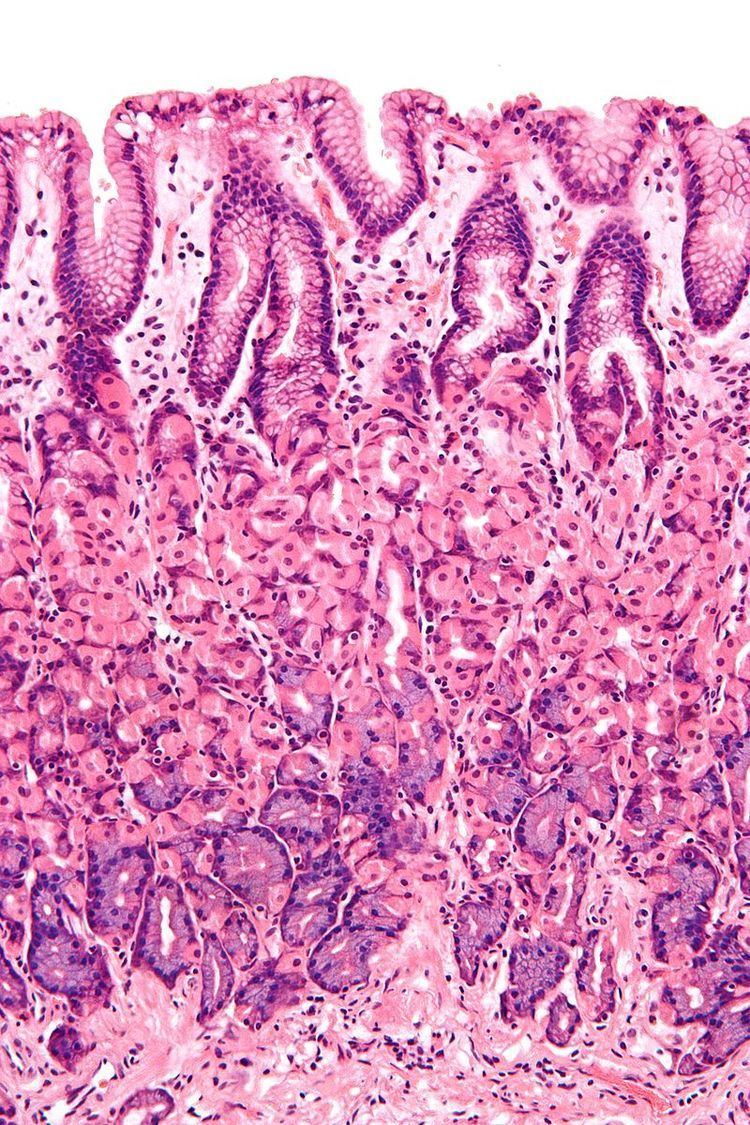Precursor ectoderm MeSH D009092 | Latin tunica mucosa | |
 | ||
A mucous membrane or mucosa is a membrane that lines various cavities in the body and surrounds internal organs. It consists of one or more layers of epithelial cells overlying a layer of loose connective tissue. It is mostly of endodermal origin and is continuous with the skin at various body openings such as the eyes, ears, inside the nose, inside the mouth, lip, the urethral opening and the anus, frenulum of tongue, tongue. Some mucous membranes secrete mucus, a thick protective fluid. The function of the membrane is to stop pathogens and dirt from entering the body and to prevent bodily tissues from becoming dehydrated.
Contents
Structure and function
Developmentally, the majority of mucous membranes are of endodermal origin. Exceptions include the palate, cheeks, floor of the mouth, gums, lips and the portion of the anal canal below the pectinate line, which are all ectodermal in origin. They are composed of one or more layers of epithelial cells that secrete mucus, and an underlying lamina propria of loose connective tissue. The type of cells and type of mucus secreted vary from organ to organ and each can differ along a given tract.
Mucous membranes line the digestive, respiratory, and reproductive tracts and are the primary barrier between the external world and the interior of the body; in an adult human the total surface area of the mucosa is about 400 square meters while the surface area of the skin is about 2 square meters. They are at several places contiguous with skin: at the nostrils, the lips of the mouth, the eyelids, the ears, the trachea, the stomach, the genital area, and the anus. Along with providing a physical barrier, they also contain key parts of the immune system and serves as the interface between the body proper and the microbiome.
One of its purposes is to keep the tissue moist (for example in the respiratory tract, including the mouth and nose). It also plays a role in absorbing and transforming nutrients. Mucous membranes also protect the body from itself; for instance mucosa in the stomach protects it from stomach acid, and mucosa lining the bladder protects the underlying tissue from urine. In the uterus, the mucous membrane is called the endometrium, and it swells each month and is then eliminated during menstruation.
Examples
Some examples include:
Nutrition
Niacin and vitamin A are essential nutrients that help maintain mucous membranes.
